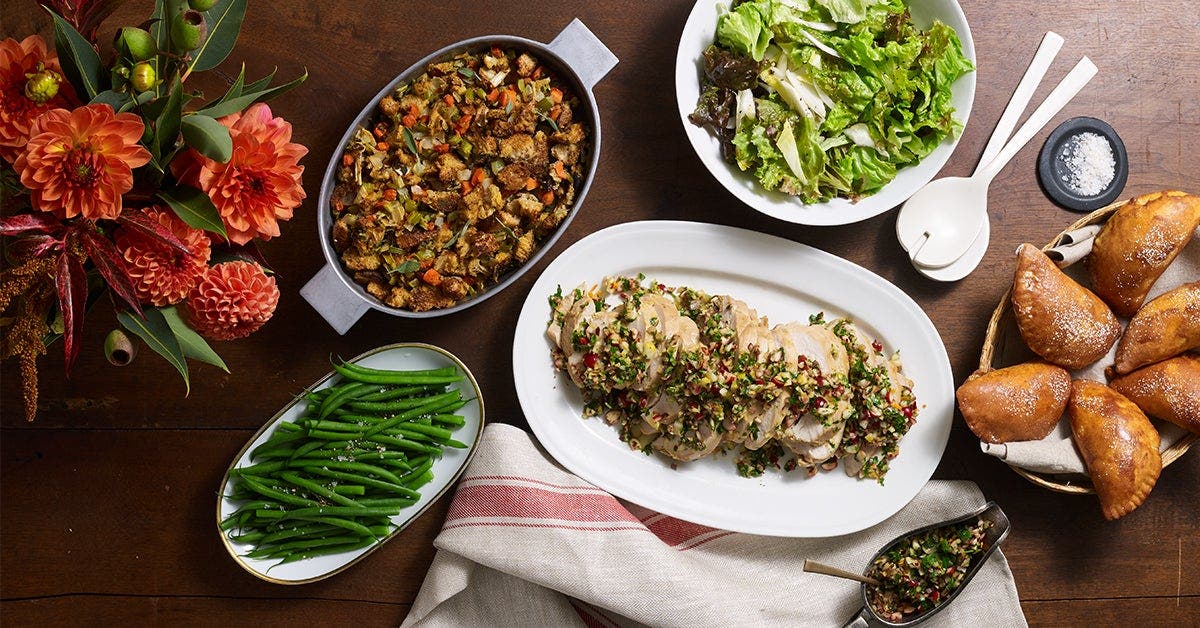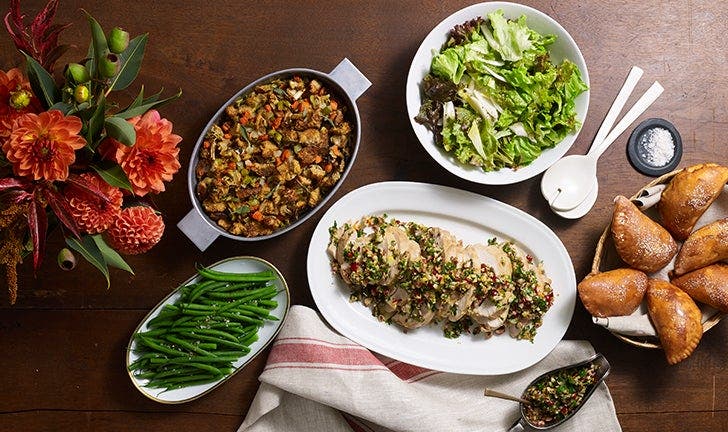What to Do with Those Thanksgiving Leftovers


Thanksgiving meals are almost never without leftovers – but that’s the beauty of them, isn’t it?
The key is to not let those leftovers go to waste, so whether you want to give your dinner guests to-go boxes or turn one meal into three others, we’ve got tips to make the most of them.
Storage
Rosemary Trout, a food scientist and director of the Food and Hospitality Management department at Drexel University in Philadelphia, keeps the basics in mind when it comes to food storage and safety.
How to pack, store and save your thanksgiving leftovers
“Plastic wrap/tin foil always works – and if you don’t want to use disposable supplies, mason jars work well, too, for sides and gravy,” says Trout.
If you want to send your guests home with leftovers after the Thanksgiving meal, you can go simple with paper plates and tin foil, or jazz it up a bit and give them to-go boxes kind of like party favours.
“There are some nice to-go containers on the market that work well,” says Trout. “Otherwise, mason jars with plastic lids, or heavy paper plates wrapped in plastic wrap or foil – and since it’s Thanksgiving, buy some pretty ribbon to tie the package together!”
How long can you refrigerate/freeze foods
“It varies quite a bit,” Trout says. “There’s both food safety, which is primary, and food quality to think about. Typically, refrigerated foods held at 41oF or lower should not last more than seven days. If your refrigerator is not keeping food at that temperature or lower, then leftovers don’t last more than a day or two. Highly perishable foods, or those associated with food-borne illness must be kept at 41o F or lower. Many foods will last at least a month in the freezer and sometimes longer, but watch for quality changes. Also, food stored at the coldest parts of your freezer or refrigerator will last longer than those stored in the warmest sections – like on the door, or shelving closest to the door.”
When storing her Thanksgiving leftovers, foodie blogger and co-founder of BakingHow Michelle Keldgord turns to Tupperware.
“That way, I know exactly where to find everything,” she says.
Keldgord notes that you can freeze your leftovers instead of keeping them in the fridge, but some things freeze better than others.
“For example, I don’t bother freezing stuffing or cranberry sauce. But I will freeze turkey and mashed potatoes.”
Reheating
When reheating, moisture is key.
“Add a bit of water when reheating sides if you’re using the microwave,” says Trout. “Leftover turkey can be reheated in a pan on the stovetop with some chicken/turkey stock. It stays moist that way and heats rather quickly. Stirring food while it’s reheating promotes even heating.”
Jessica Randhawa, the head chef, recipe creator, photographer, and writer behind The Forked Spoon, has several tips for reheating your Thanksgiving leftovers safely and evenly in the microwave.
- Check the temp: “Not using a digital thermometer is easily the most common mistake most people make when microwaving food. For example, the USDA recommends checking that the internal temperature of leftover food cooked in a microwave is at least 165 degrees F with a thermometer.”
- Don’t walk away: “A widespread mistake when microwaving food is quickly walking away from the microwave when the food is cooking. It is always best to stay near the microwave to ensure that the food is cooking evenly and ensure the food is not splattering, boiling over, or popping,” says Randhawa.
- Keep it covered: Randhawa suggests using a microwave-safe cover (she recommends vented silicone) to avoid splatters and to ensure even cooking.
- Mix it up: To avoid uneven cooking, Randhawa says it helps to stir the food around during the reheating process.
Using up leftovers
Keldgord suggests thinking outside of the box with your Thanksgiving leftovers. Some of her go-tos are sandwiches, soups and casseroles.
If cranberry sauce is one of your pesky leftovers, Christine Pittman has a few ideas.
The founder of COOKtheSTORY and The Cookful says this condiment is actually one of her favourite Thanksgiving leftover items.
“It’s such a delicious and versatile ingredient that can be reused for so many different recipes and snacks,” she says. “Whether you made your own cranberry sauce or bought some premade from the grocery store, there are so many great things you can do with that leftover sauce.”
- Try using it as jam on your morning toast – Pittman likes it with peanut butter.
- Use leftover cranberry sauce in smoothies to add a tart sweetness.
- Warm it up and use it as a sauce on ice cream.
